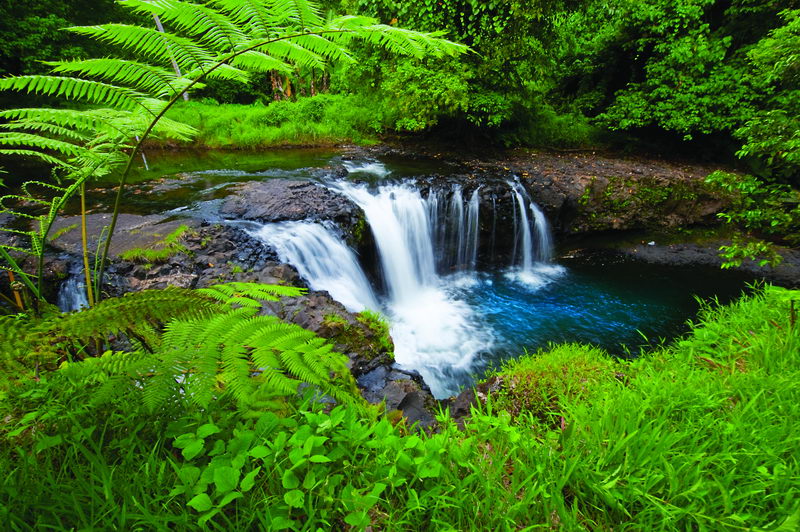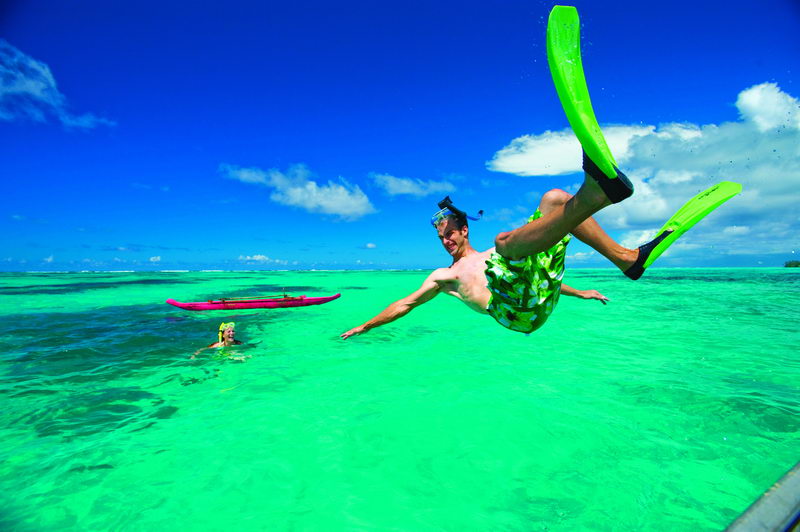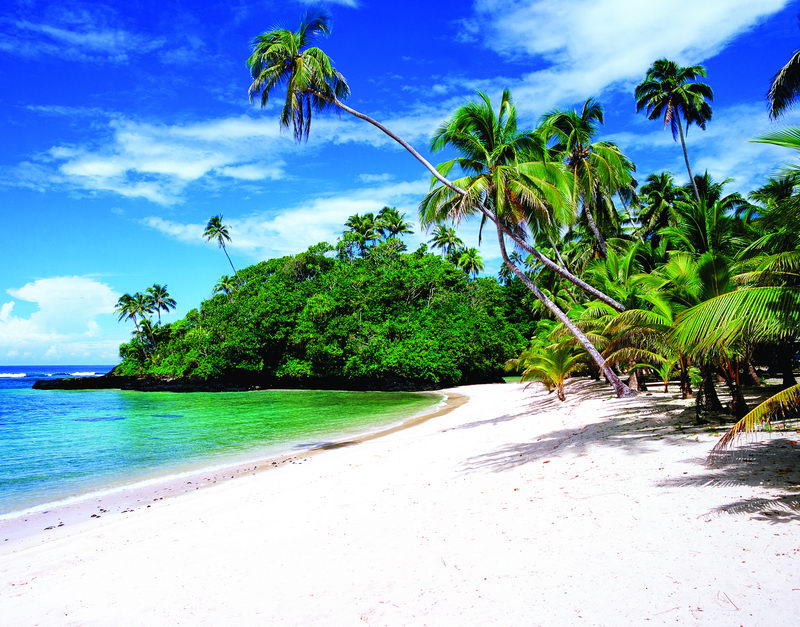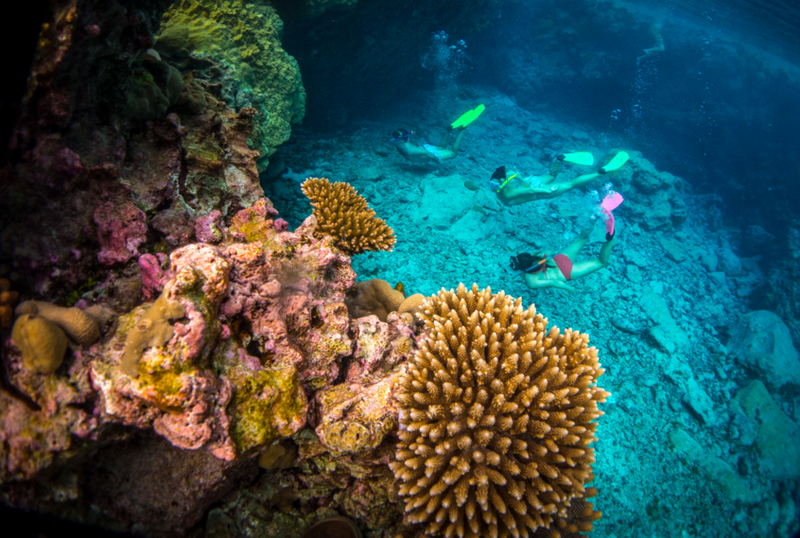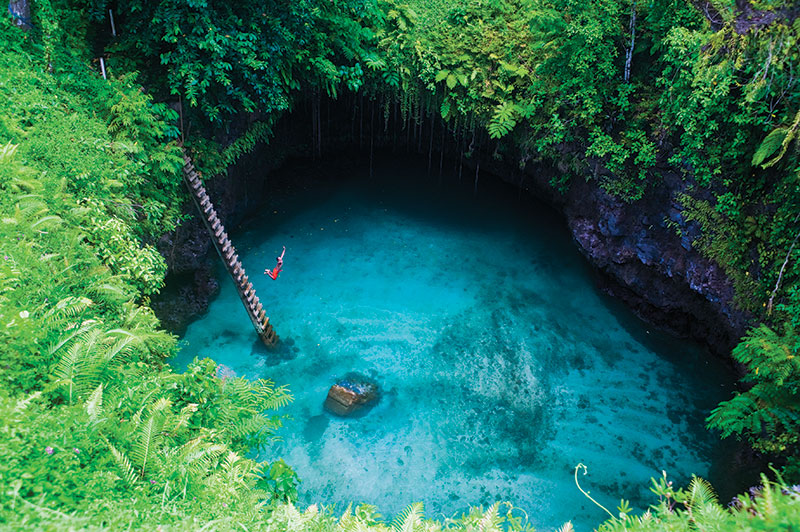The lava fields on Savai’i are easily the largest attraction on the island. A unique geological phenomenon, the Mt Matavanu eruption buried five villages throughout its three-year long eruption. Thanks to the slow flowing lava, no one was killed in the eruption.
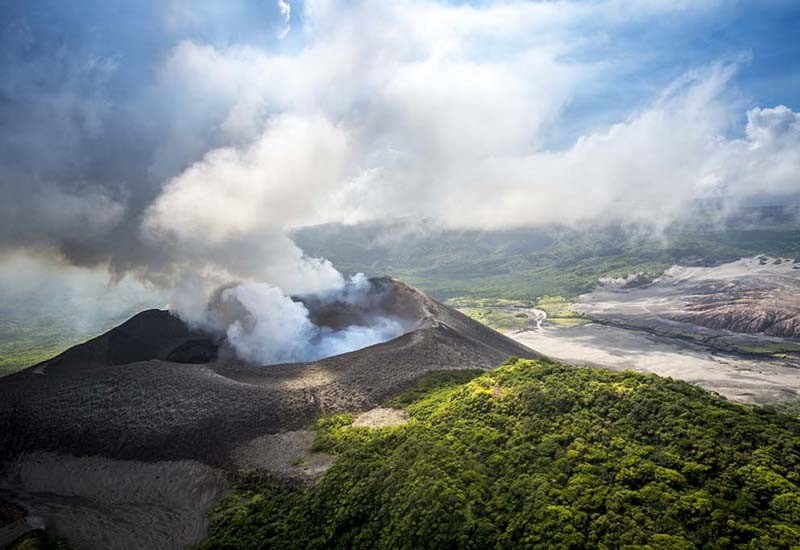
Photo credit: David Kirkland/Samoa Tourism
The local church and a gravesite of the chief’s virgin daughter were unscathed in lava flow, and provide an eerie look into the past. Visiting the fields is free, but you’ll be asked for 5 tala to visit the gravesite. After looking at the church, walk down to the water where the lava finally came to rest.
Markets are a part of everyday life for Samoans, and in the centre of Apia you can find a variety of handicrafts and foods to haggle on.
Rise early Sunday morning for a chance to see the fish market in full swing. Freshly caught tuna, octopus and eels along with a huge variety of ‘what is that?’ are available at unbelievably low prices. Everything is fresh off the boat, and the locals love sharing their knowledge. Pluck up some courage and try something new.
The produce markets are also open Monday through Saturday and are best before sundown. There fruit selection is vast and there are plenty of samples to nibble on. Buy in season and experience truly tropical fruit, locally grown. A coconut is a refreshing way to cool down from the midday heat, just ask for a straw.
Traditional handicrafts can be found at the Apia flea markets that run every day but Sunday. Purchasing gifts here mean you are supporting the local economy. Try on a lava-lava (sarong) or take home some wooden carvings for loved ones. Prices are low, and the kava bowls and pandanus mats are uniquely Samoan. A recent blaze burnt down the old flea markets but quick construction has meant trading is underway again. Take small notes to purchase goods at any of the markets.
Experience Fa’a Samoa, the Samoan way of life by visiting a nearby village. A proud and generous people, Samoans will make you feel welcome. Play footy with the kids, or get them to show you their favourite beach spots.
Tours can be arranged through your accommodation, and will include a formal introduction to the village. From there you’ll be able to wander freely observing true island life.
Please be respectful when visiting villages. Don’t wear inappropriate clothing, and keep to the customs of the locals. Samoa is deeply religious; there is a prayer curfew at sundown so it’s best to avoid being on the street during this time.

Hiring a car isn’t the only way to get around Samoa. Embrace island time and take one of the colourful public buses instead. This is a great way to meet locals and experience true Samoa. Everyone piles in, and sits on each other’s laps.
There is no better place to do absolutely nothing than in Samoa. With a plethora of postcard-perfect beaches and fresh coconuts everywhere, spend the day soaking up sunrays. Your only decision is which beach.
Aganoa Black Sand Beach has deep water, but safe swimming. Close to the Maninoa village, you’ll need to access the beach via an off road track.
Lalomanu Beach is where you’ll post images from that will make your friend sick with envy. On the south coast of Upolu Island it has clear turquoise waters, peaks of white breakers and white sand. Hire a beach fale and never leave. Between July and October you may see whales in the Pacific.
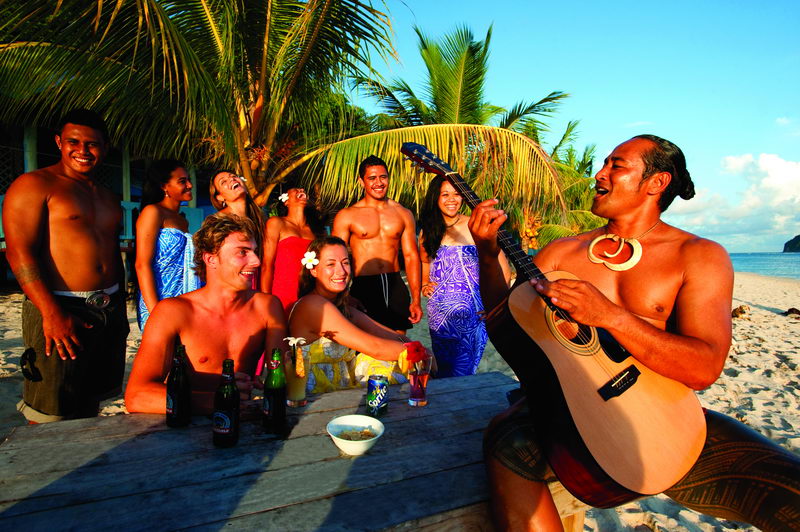
Photo credit: David Kirkland/Samoa Tourism
Faiaai Beach is fringed with palms. Ask the locals for access then head down the steep trail to a beautiful escape.
You can pick up a list of beach fales can be obtained from the Samoa Tourism Authority (info@samoa.travel), although asking other travellers is an easier way to find out where’s best.
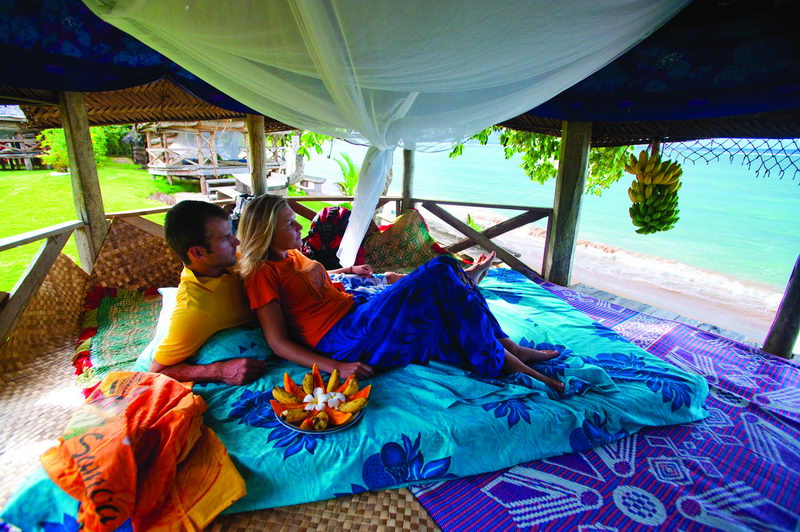
Photo credit: David Kirkland/Samoa Tourism
Sunday in Samoa is a day for church. Throngs of locals will dress in white and attend the beautiful churches across the city; exalting the lord. Some of the grandest churches can be spotted along the road to Apia from the airport, but even the village churches are stunning. If you want to attend a mass, ask the locals how to dress appropriately.
The Baha’i’ House of Worship is one of only 8 in the world. The beauty of the building is striking in itself, with nine symmetrical sides and majestic dome, but more remarkably this place of meditation and prayer is open to people of all backgrounds.
At 10am every Sunday a service is held at the House of Worship with prayers from various world religions.
A Samoan Choir sings and afterwards you can join the congregation for light refreshments, or explore the peacefulness of the gardens.
At the Avao Congregational Christian Church is a memorial marking the site of where the bible was translated into Samoan, beginning in 1834.
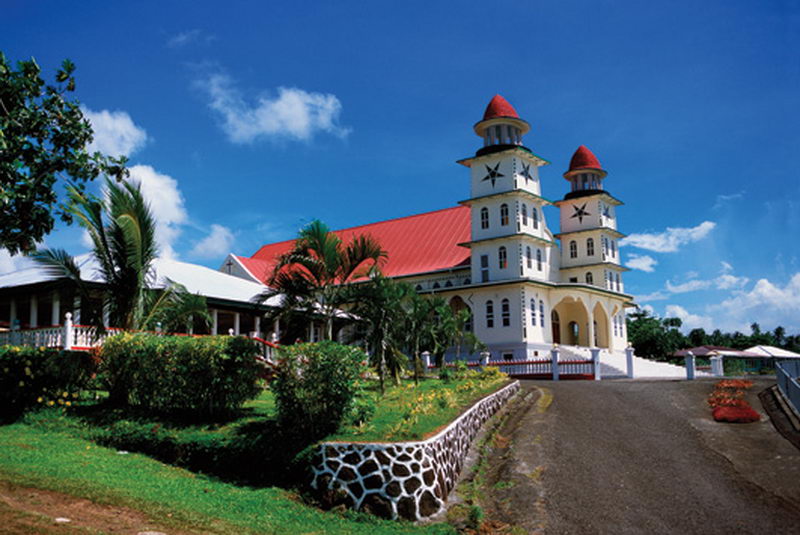
Photo credit: David Kirkland/Samoa Tourism
Treasure Island author, Robert Louis Stevenson, spent his final years in Samoa.
The locals named him Tusitala – ‘teller of tales’. You can hike up to visit his grave at Mt Vaea, overlooking the sea, or visit the mansion where he used to live. This magnificent building has been converted into a museum and houses many of the family’s possessions.
If you’re a history buff, be sure to check out the small, but well maintained National Museum of Samoa.
Established in 1999 it houses a collection of paintings and artefacts, as well as running weekly workshops and holding temporary exhibitions.
You could also visit the John Williams Memorial where missionaries first landed in 1830.
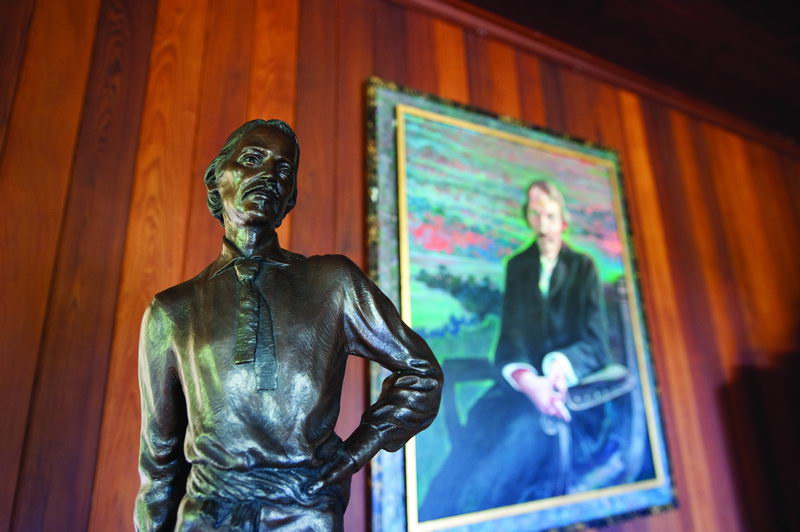
Photo credit: David Kirkland/Samoa Tourism
Powerful waves hit the coral reefs that surround the islands creating some awesome surf breaks in both Savai’i and Upolu. Samoa isn’t the best place for beginners, but for those with a bit of skill, it’s idyllic and mostly uncrowded.
Between May and October you’ll want to be rising early to make the most of the conditions before the winds pick up and the waves become too powerful. November through to April, the breaks are more comfortable. There is no surf shop in Samoa, so bring all your surf gear.
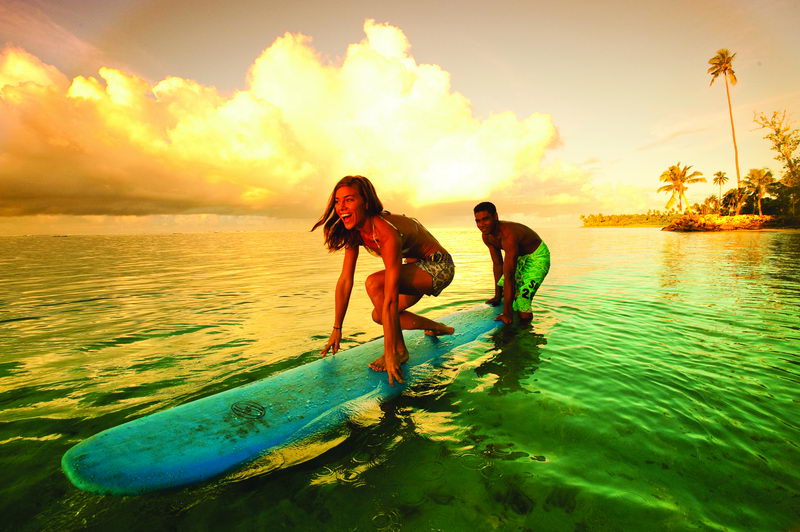
Photo credit: David Kirkland/Samoa Tourism
According to legend Paia Dwarfs Cave, near Manase, is home to dwarves. Explore the cave and find footprint evidence of these mystical little people. The cave is a kilometre long, so bring good shoes, water and a torch.
An oddly shaped crack in the lava is said to be the footprint of Moso, a famous giant. It is said it was made when Moso step over from Fiji. To see it for yourself will cost you a small fee.
Samoa is a safe and smooth place to cycle, if not a little sweaty. Armed with sunscreen a singlet and a decent hire bike, it’s also an amazing way to see the islands. Take advantage of all the waterfalls, beaches and swimming holes along the way.
Most of the roads are well sealed and there are only a few hills to be aware of. Everyone will greet you along your way, and when you stop off roadside there’ll be plenty of fresh fruit and coconuts to drink.
Professional fishing boats head out daily, or you take a more cruise like approach and stay on a catamaran for a few days, waking up to fresh shellfish each morning.
A local trip will give you a real insight into island time, and even if you’ve never fished before, there’s no doubt you’ll come back with spoils of the sea.
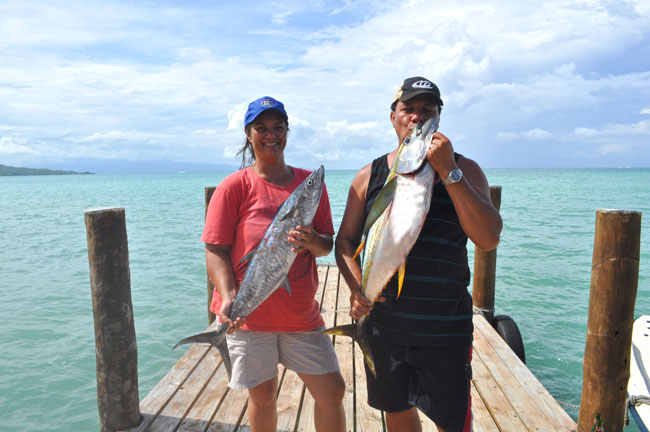
A land of rainforest, natural beauty and fresh ingredients, it is no wonder Samoa is also known for its traditional healers, or taulasea. The knowledge of many therapeutic plants has been passed down through generations of Samoan women and, with the onset of tourism, is now being used to pamper weary travellers.
Spoil yourself with a coconut oil fofo, the traditional Samoan massage or a refreshing banana and papaya body wrap and facial. Nonu, one of the most valuable of the rain forest’s restorative plants sooths, nourishes and calms irritated skin, as well as cures upset stomachs and high blood pressure. Try it for yourself at one of the many world-class spas.
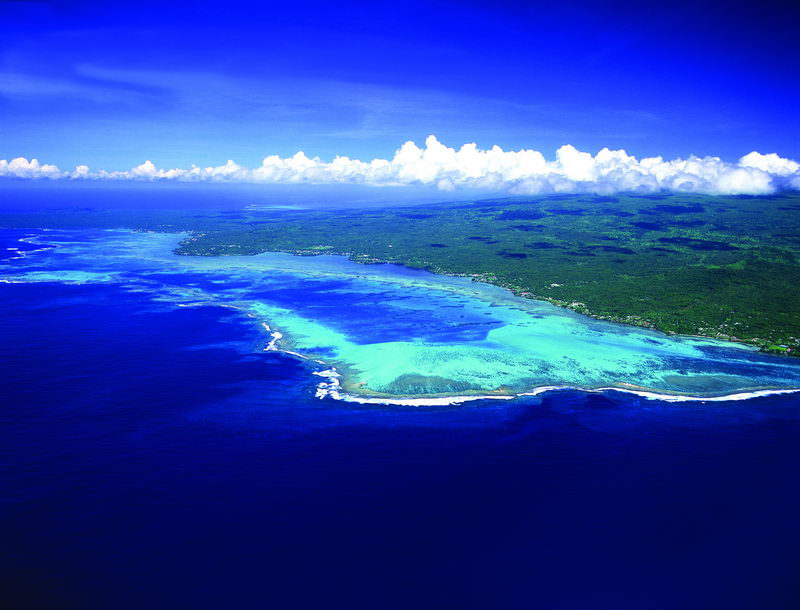
Photo credit: David Kirkland/Samoa Tourism
Watch nature at it’s wildest in the southwest of Savai’i. Here the Alofaaga Blowholes drive water hundreds of feet up into the air. Throw a coconut into the blowhole and see how far it launches.
Developed in the 19th Century the Fa’ataupati, slap dance, is indigenous to Samoa.
Traditionally performed by men for birthdays, weddings and other celebrations, it is a demonstration of strength.
You can watch it being performed at special fiafia nights along with firedances, taualuga – a sacred dance performed by virgins – all while enjoying a taste of Samoan cuisine.
In late August the Teuila Festival is held, a much larger annual celebration of this tradition and way of life.
Choirs sing, umus burn (underground ovens) and one beauty is crowned Miss Samoa.
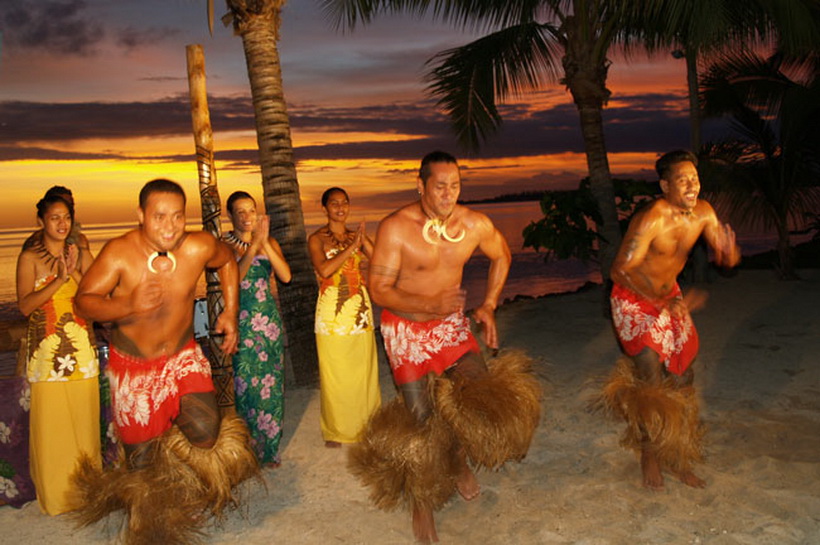
Sources:
http://adventuresallaround.com/samoa-top-ten-things-to-do/
http://www.samoa.travel/
https://www.lonelyplanet.com/samoa
http://www.britannica.com/place/Samoa-island-nation-Pacific-Ocean
https://www.tripadvisor.co.nz/ShowTopic-g312868-i8166-k2821945-Snorkelling_in_Samoa-Apia_Upolu.html
http://thecuriouskiwi.co.nz/samoa.html
http://www.surftravel.com.au/destinations/samoa/
http://www.flightcentre.co.nz/nz-travel-blog/2011/05/25/samoa-my-top-picks
http://www.stuff.co.nz/travel/destinations/pacific-islands/9621378/Splashing-out-in-Samoa
https://www.tripadvisor.co.nz/ShowUserReviews-g312868-d2196823-r117013696-Palolo_Deep_Marine_Reserve-Apia_Upolu.html#
http://www.jasons.com/samoa/samoa-diving-and-snorkelling
http://www.seabreezesamoa.com/things-to-do
divesavaii.com.
http://www.stuff.co.nz/travel/destinations/pacific-islands/9621378/Splashing-out-in-Samoa
http://www.atlasandboots.com/best-hiking-trails-south-pacific/
http://www.samoa.travel/activity/mt-silisili
http://www.samoaaccommodation.co/Activities/Samoa-Tours-Rainforest-Walk-to-Crater-Lake-Lanotoo-Samoa
http://www.nzherald.co.nz/travel/news/article.cfm?c_id=7&objectid=10743932http://nzsurfmag.co.nz/samoa
http://www.worldwildlife.org/species/green-turtle
http://samoadev.telepathy.co.nz/sightseeing/x58/Produce-Markets
http://www.albomadventures.com/samoa-highlights

